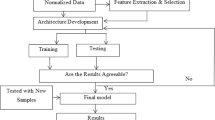Abstract
The paper demonstrates an efficient use of intelligent system for solving the classification problem in the sector of health insurance. A model based on adaptive neuro-fuzzy inference system (ANFIS) is proposed to deal with the fuzziness in the real-life environments. This approach enables the interpretation of majority of health factors of an insurance seeker through a set of fuzzy rules to determine the degree of risk to an individual. A fuzzy neural network has been trained with fuzzy inputs like age, occupation, family size, smoking habits, drinking habits, diabetes history, heart disease and other relevant inputs of individual for risk calculation. The model gets importance in health insurance sector because risk determination is fuzzy in nature, and fuzzy calculations are done more accurately by machines rather than human beings especially for the problems which are repetitive in nature and have large number of vague parameters. The proposed model can help the insurance seeker to identify the degree of risk he is having if he is not taking health insurance. This serves a dual purpose of attracting the insurance seeker to acquire the insurance and facilitate generating business to insurance company. Indicative results are presented and discussed in detail in terms of accuracy and solution interpretability.








Similar content being viewed by others
References
Al-Hinti M, Samhouri A, Al-Ghandoor A, Sakhrieh A (2009) The effect of boost pressure on the performance characteristics of a diesel engine: a neuro-fuzzy approach. Appl Energy 86:113–121
Arora N (2009) Regulating air-fuel balance in combustion engines using CMAC neural networks. In: IEEE Xplore via international conference on methods and models in computer science held at JNU, New Delhi
Arora N, Vij SK (2010) A novel independent component analysis approach for bankruptcy prediction using neuro-fuzzy networks. Int J Commer Res Manag 1(4):104–112
Arora N, Vij SK (2012) A hybrid neuro-fuzzy network for underwriting of individual health insurance. Int J Adv Res Comput Sci 3(2):231–236
Delbaen F, Haezendonck JM (1989) A martingale approach to premium calculation principles in an arbitrage-free market. Insur Math Econ 8:269–277
Handel B (2010) Adverse selection and switching costs in health insurance markets: when nudging hurts. http://www.google.co.in/url?sa=t&rct=j&q=handel%20b%20adverse%20selection%20and%20switching%20costs%20in%20health%20insurance%20markets%3A%20when%20nudging%20hurts&source=web&cd=2&cad=rja&ved=0CCkQFjAB&url=http%3A%2F%2Fwww.aeaweb.org%2Faea%2F2011conference%2Fprogram%2Fretrieve.php%3Fpdfid%3D24&ei=W5RRUIOhLYLJrAeRuYDYBA&usg=AFQjCNFC3m4QP_RMsoB29Lu80fNRtMFtfQ
Hurlimann W (1998) On stop-loss order and the distortion pricing principles. ASTIN Bull 28(2):119–134
Jang JSR (1993) ANFIS: adaptive-network-based fuzzy inference system. IEEE Trans Syst Man Cybern 23(3):665–685
Jang JSR, Sun CT, Mizutani E (1997) Neuro-fuzzy and soft computing. Prentice-Hall, New Jersey
Madrian B, Shea D (2001) The power of suggestion: inertia in 401(k) participation and savings behavior. Q J Econ 141(4):1149–1150
Sunstein C, Thaler R (2008) Nudge: improving decisions about health, wealth, and happiness. Yale University Press, New Haven
Wang S, Young VR, Panjer HH (1997) Axiomatic characterization of insurance prices. Insur Math Econ 21:173–183
Wang S, Young VR (1998) Ordering of risks: utility theory verse Yaari’s dual theory of risk. Insur Math Econ 22:145–161
Wang YM, Taha MS, Elhag T (2008) An adaptive neuro-fuzzy inference system for bridge risk assessment. Exp Syst Appl 34:3099–3106
Xie Z (2006) Exploring on the risk profile of China insurance for setting appropriate solvency capital requirement, presented to the 36th ASTIN Colloquium, Zurich, 2005. Also printed as the chapter 7 of the actuarial science: theory and methodology, World Scientific, pp 245–263
Young VR (1998) Families of updated rules for non-additive measures: applications in pricing risks. Insur Math Econ 23:1–14
Author information
Authors and Affiliations
Corresponding author
Rights and permissions
About this article
Cite this article
Arora, N., Vij, S.K. Reckoner for health risk and insurance premium using adaptive neuro-fuzzy inference system. Neural Comput & Applic 23, 2121–2128 (2013). https://doi.org/10.1007/s00521-012-1162-4
Received:
Accepted:
Published:
Issue Date:
DOI: https://doi.org/10.1007/s00521-012-1162-4




